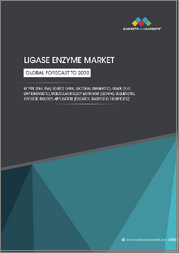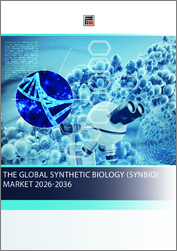
|
시장보고서
상품코드
1627538
분자 스위치 시장 : 치료 표적, 의약품 개발, 약물전달 메커니즘-적응증별 용도(2025년)Molecular Switches As Therapeutic Targets, Drug Development, Drug Delivery Mechanism & Application By Indications Insight 2025 |
||||||
분자 스위치는 특정 환경 또는 생물학적 트리거에 반응하여 서로 다른 상태 사이를 전환 할 수 있는 동적 존재입니다. 이러한 트리거에는 pH 변화, 광조사, 온도, 산화 환원 조건, 특정 이온이나 생체 분자의 존재 등이 포함됩니다. 분자 스위칭 개념은 고도로 제어된 진단 및 치료 시스템의 기반을 제공함으로써 의료 및 제약 분야에 큰 영향을 미쳐 왔습니다. 생물학적 반응을 정확하게 제어하는 능력에 의해 분자 스위치는 고도의 약물 전달 시스템, 실시간 진단 툴, 개별화 치료 개입의 개발에 불가결한 것이 되고 있습니다.
의약품 분야에서 분자 스위치는 의약품 활성 성분의 방출을 시공간적으로 정확하게 제어할 수 있게 하고, 약물 전달에 혁명을 가져왔습니다. pH 감수성 분자 스위치는 나노 입자 기반 약물 캐리어에 채택되어 있으며, 통상적인 생리적 조건 하에서는 안정성을 유지하지만 산성 환경에서는 분해되어 페이로드를 방출합니다. 예를 들어, FPBC@SN 나노입자 시스템은 유방암 세포의 산성 세포질을 표적으로 하는 pH 감수성 분자 스위치를 통합하고 있습니다. 이 시스템은 페롭터시스를 유도하는 솔라페닙과 종양 면역을 증강하는 IDO 저해제를 모두 방출합니다. 이러한 스위치를 활용함으로써 이러한 시스템은 오프 타겟 효과를 줄이고 치료 지수를 높이며 종양학의 중요한 과제에 대처합니다.
이 보고서는 세계의 분자 스위치 시장에 대해 조사했으며, 시장 개요와 함께 분자 스위치의 치료 표적으로서의 중요성, 부문별 동향, 신기술과 향후 전망 등의 정보를 제공합니다.
목차
제1장 분자 스위치의 서문
제2장 분자 스위치의 의학적 의미
제3장 약물 전달 및 방출에서 분자 스위치의 중요성
- 개요
- 진행중인 연구개발
제4장 분자 스위치의 치료 표적으로서의 중요성
제5장 분자 스위치-대분류
제6장 분자 스위치 : 암 적응별
- 유방암
- 전립선암
- 대장암
- 폐암
- 위암
제7장 분자 스위치: 신경 질환별
- 파킨슨병
- 알츠하이머병
- 다발성 경화증
제8장 분자 스위치 : 감염증별
- 바이러스 감염
- 세균 감염
제9장 분자 스위치 : 자가면역질환 및 염증성질환별
- 당뇨병
- 관절염
- 루푸스
- 건선
제10장 분자 스위치 : 심혈관 질환별
- 심근경색(심장 발작)
- 기타
제11장 재생 의료에서의 분자 스위치의 중요성
제12장 분자 스위치를 표적으로 한 주요 의약품의 판매 동향
제13장 의약품 처방에서 분자 스위치
- 스마트한 의약품 처방과 분자 스위치
- 생체 재료 기반의 약물 전달 시스템
- 자기 규제 약물 시스템
제14장 현재의 동향 및 신기술
- 나노 의료에서 분자 스위치
- 반응성 약물 시스템의 혁신
- 인공지능 및 머신러닝과의 통합
제15장 미래의 전망 및 방향성
- 분자 스위치 기술의 진보
- 분자 스위치에 의한 맞춤형 의료의 미래
- 신약과 치료에 대한 잠재적 영향
Molecular Switches As Therapeutic Targets, Drug Development, Drug Delivery Mechanism & Application By Indications Insight 2025 Research Insights:
- Top 20 Drugs Sales Targeting Molecular Switches: 2022 - 2024
- Molecular Switches Significance In Regenerative Medicine & Nanomedicine
- Molecular Switches Significance In Drug Delivery & Release
- Molecular Switches Significance As Therapeutic Targets
- Molecular Switches In Cancer Therapeutics: Breast Cancer, Prostate Cancer, Lung Cancer, Colorectal Cancer, Gastric Cancer
- Molecular Switches In Neurological Disorder: Parkinson's Disease, Alzheimer's Disease, Multiple Sclerosis
- Molecular Switches In Autoimmune & Inflammatory Disorder: Diabetes, Arthritis, Lupus, Psoriasis
Molecular switches are dynamic entities capable of transitioning between distinct states in response to specific environmental or biological triggers. These triggers can include changes in pH, light exposure, temperature, redox conditions, or the presence of certain ions or biomolecules. The concept of molecular switching has significantly influenced the medical and pharmaceutical domain by providing a foundation for highly controlled diagnostic and therapeutic systems. The ability to precisely regulate biological responses has made molecular switches indispensable in the development of advanced drug delivery systems, real-time diagnostic tools, and personalized therapeutic interventions.
In the pharmaceutical sector, molecular switches have revolutionized drug delivery by enabling precise spatiotemporal control over the release of active pharmaceutical ingredients. One of the most widely explored triggers is pH, as pathological conditions like cancer and inflammation often create acidic microenvironments. pH-sensitive molecular switches are employed in nanoparticle-based drug carriers, which remain stable under normal physiological conditions but disassemble in acidic environments to release their payload. For example, the FPBC@SN nanoparticle system integrates a pH-sensitive molecular switch to target acidic cytoplasm in breast cancer cells. This system releases both sorafenib, which induces ferroptosis, and an IDO inhibitor to enhance tumor immunity. By leveraging such switches, these systems reduce off-target effects and enhance the therapeutic index, addressing key challenges in oncology.
Table of Contents
1. Introduction To Molecular Switches
- 1.1 Overview
- 1.2 History & Emergence In Medicine
2. Molecular Switches Clinical Significance In Medicine
3. Molecular Switches Significance In Drug Delivery & Release
- 3.1 Overview
- 3.2 Ongoing Research & Developments
4. Molecular Switches Significance As Therapeutic Targets
5. Molecular Switches - Broad Classification
6. Molecular Switches By Cancer Indication
- 6.1 Breast Cancer
- 6.2 Prostate Cancer
- 6.3 Colorectal cancer
- 6.4 Lung Cancer
- 6.5 Gastric Cancer
7. Molecular Switches By Neurological Disorder
- 7.1 Parkinson's Disease
- 7.2 Alzheimer's Disease
- 7.3 Multiple Sclerosis
8. Molecular Switches By Infectious Disease
- 8.1 Viral Infection
- 8.2 Bacterial Infection
9. Molecular Switches By Autoimmune & Inflammatory Disorder
- 9.1 Diabetes
- 9.2 Arthritis
- 9.3 Lupus
- 9.4 Psoriasis
10. Molecular Switches By Cardiovascular Disease
- 10.1 Myocardial Infarction (Heart Attack)
- 10.2 Others
11. Molecular Switches Significance In Regenerative Medicine
12. Sales Insight Of Key Drugs Targeting Molecular Switches
13. Molecular Switches In Drug Formulation
- 13.1 Smart Drug Formulations & Molecular Switches
- 13.2 Biomaterial Based Drug Delivery Systems
- 13.3 Self Regulating Drug Systems
14. Current Trends & Emerging Technologies
- 14.1 Molecular Switches In Nanomedicine
- 14.2 Innovations In Responsive Drug Systems
- 14.3 Integration With Artificial Intelligence & Machine Learning
15. Future Perspectives & Directions
- 15.1 Advancements In Molecular Switch Technology
- 15.2 The Future Of Personalized Medicine With Molecular Switches
- 15.3 Potential Impact On Drug Discovery & Therapeutics



















